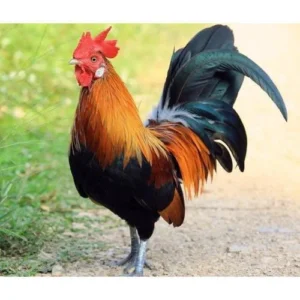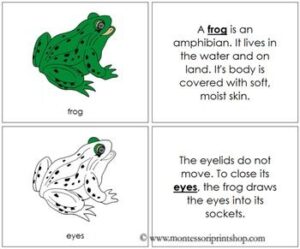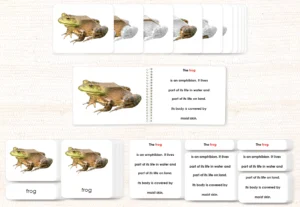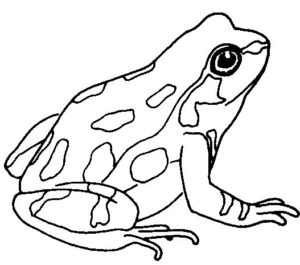Another important element of Montessori Approach to Cultural Studies cultural instruction includes moving from totally to be consistent parts. Like Madam Montessori said “give the whole first and then parts”. In simple words before introducing the leaf, flower or root, the whole plant should be introduced.
Montessori Culture materials
Montessori Approach to Cultural Studies
Like all other areas of Montessori curriculum (such as EPL, Sensory Discrimination, Mathematics, and Language) cultural materials are also made available in separate sections of the classroom. These materials make cultural studies simple and enjoyable for the children during the motor-sensorial period of their lives. The information is passed on to the child conversationally and through three Period Lessons .
Apart from materials available in the market, the directress has to prepare a lot of materials herself as for other cultural subjects. Some of the materials like continent folders in geography, nature tables for life sciences and classified and nomenclature cards and booklets require extensive efforts on the part of the director.
This manual will provide you with necessary guidelines to prepare all cultural materials that a directress is supposed to make herself. Two important materials which are used frequently in Montessori classrooms are classified cards and Nomenclature cards. The following section will explain how to prepare and use these cards.
1.Montessori classified Cards
Classified Cards are a Montessori material which Montessori Approach to Cultural Studies can be used for vocabulary, classification, reading, writing, culture, geography, and art through the course of 3 years during the child’s stay in Montessori early childhood classroom.
Each set Classified Cards normally consists of two sets;
Separate Labels Set : In this set of cards, each card has a picture, but the label is printed on a separate card as shown in the pictures below


Attached Labels Set : In this set of cards, each card has a picture and the related label is printed on the same card. These cards are to be used as the control cards. Some Montessori teachers do not make set 2, rather make an extra set of labels and paste in the backside of the picture of the picture cards for control of error. After labeling the picture cards, the child can flip them and check his answers.


The classified cards help to enrich a child’s vocabulary, and to develop his understanding of the environment Montessori Approach to Cultural Studies. They help the child to develop an understanding of classification and where the things fit in. They prepare and probe the child indirectly for relevant future learning. This is the reason that too many cards are not included in the set, and typically a set does not consist of more than cards. We give the names of the cards along with small introductions to the child which stimulates his curiosity and he naturally gets interested in finding more as he grows older.
How to use Classified Cards:
Classified cards can be used over years in the following different ways;
1.Use picture cards (without labels) with very young children aged 2.5 to three years of age. Give the child information about the class of picture you are going to show, e.g., “I’m going to show you the pictures of the former animal.” Then, simply complete a three period lesson selecting two to three cards at a time.



2. Mix pictures of two or more different classes, e.g. farm animals, and then ask the child to sort the pictures into two groups.
3.When the child begins to read, Montessori Approach to Cultural Studies use the cards (already used) with labels attached. You can play games like “I Spy Game”. For example, invite a small group of children and make them sit around you in a circle .
Distribute cards of a class and tell the children to hide their cards. Then, say, “ I spy with my little eye something that begins with mm,” The child holding a card having objects that start with ‘mmm’ e.g. monkey will put the cards on the table.“ Same game can be played for the last sound, e.g. “I spy with my little eye something that ends with duh. “This will help children read the cards on their own. For details about i spy and other language games please refer to language games in module 4.
4. When the child can read, introduce cards with labels (separate). At this stage the child has developed the ability to read and is well familiar with the names of objects on the cards as he has already worked with them many times. The cards are placed in a vertical column on the table and the child is asked to read each label and place beside the appropriate picture. After completing the work the child can check with the set of control cards.
Classified cards can also be used for the development of writing and spelling skills. The child can read a labeled card, turn it upside down and write it on his notebook. He can then turn back the card and check his work.
Classified cards constitute an important part of the Montessori curriculum. They can be used in a variety of ways for years to enrich the child’s vocabulary, develop his culture and scientific understanding and enhance his writing and spelling skills. They fill up gaps between subjects and provide motivation for future studies.
2.Nomenclature Material
Montessori Approach to Cultural Studies are interesting Montessori tools which are easy to make, fun to use and take children’s future to the detail of what they have learnt from classified cards and other learning experiences in the classroom. Nomenclature cards can be prepared for almost all Montessori cultural subjects including geography, zoology and botany. The material normally consists of cards or booklets with several (outline) pictures of one object, with each card highlighting only one part of the objects. Using this material the child was given the names of the different parts of the objects, along with simple and brief descriptions about each part.
The nomenclature is designed in four parts part. Some Montessori teachers, however, also use six parts nomenclature. The detail are as follows;
Four Part Nomenclature Montessori Approach to Cultural Studies
- Cards with labels attached

- Cards with separate labels

- Picture Cards and Descriptions Cards

- Booklet with pictures and descriptions.

Six part Nomenclature Material Montessori Approach to Cultural Studies
1) Cards with labels attached
2) Cards with separate labels
3) Picture Cards and Descriptions Cards
4) booklet with pictures and descriptions.
5) Descriptions Cards (with blanks) and Labels to fill in the blanks
6) Definition strips to be used with items 5 as the control cards.
Most early childhood Montessori teachers prefer to have the four part nomenclature material. As it is easier to be used and managed with younger children.
Most of our Nomenclature material is designed in a 4-Part Card and Book Series. However, some Montessori schools also use a 6-part format.
How to Use Four Part Nomenclature Montessori Approach to Cultural Studies
The first four materials mentioned Montessori Approach to Cultural Studies above can be used in the same five ways as classified cards (on page 5).
- Use the picture cards (without labels) with very young children aging 2.5 to three years of age. Give the child information about the nomenclature cards you are going to show, e.g., “I’m going to show you the pictures of parts of a flower. “Then, simply complete a three period lesson selecting two to three cards at a time. Give a brief description about each card.
- When the child begins to read, use the cards with labels attached. You can play games like “I Spy Game”. For example, invite a small group of children and make them sit around you in a circle. Distribute cards of a class and tell the children to hide their cards. Then, say, “I spy with my little eye something that begins with “s s s.”
- The child holding a card with a highlighted part starting with ‘s s s’ e.g. stamen will put the card on the table. “Same game can be played for the last sound, e.g.
- “I spy with my little eye something that ends with mmm. “This will help children read the cards on their own. For details about I soy and other language games please refer to chapter 3 of module 4.
- When the child can read, introduce cards with labels (separate). At this stage the child has developed the ability to read and is well familiar with the names of parts on the cards placed in a vertical column on the table and the child is asked to read each label and place it beside the appropriate picture. After completing the work the child can check with the set of control cards.
- When the child is reading well, read the booklet with the child. Having read the booklet a few times. Show the child labeled picture cards, and the corresponding description cards. Arrange all the picture cards in a column and mix up the description cards. Ask to match up with the relevant picture. The child may check his work by comparing it with the booklet.
- Nomenclature cards can also be used for the development of writing and spelling skills. The child can read a labeled card, turn it upside down and write it on his notebook. He can then turn back the card and check his work. If the six part nomenclature material is used, read the control definition cards with the key word in red along with the child. Then, arrange the cards with the key word missing on the table. Provide the missing (key word) labels to the child to read the cards and fill in the blanks with the labels. Once done, he can check his work with the Montessori Approach to Cultural Studies control definition cards.
Extension(Making Booklets)
Provide children with Montessori Approach to Cultural Studies the black outlined picture used in the nomenclature materials. Tell children to precisely color and label the different parts of the object in the picture. You may also ask them to scribe the definitions on cards. Show children how to blind the picture and definition cards together to make a booklet.

Making the booklets Montessori Approach to Cultural Studies can reinforce previous learning, and it is fun going through the books with the children designed by the children themselves.
